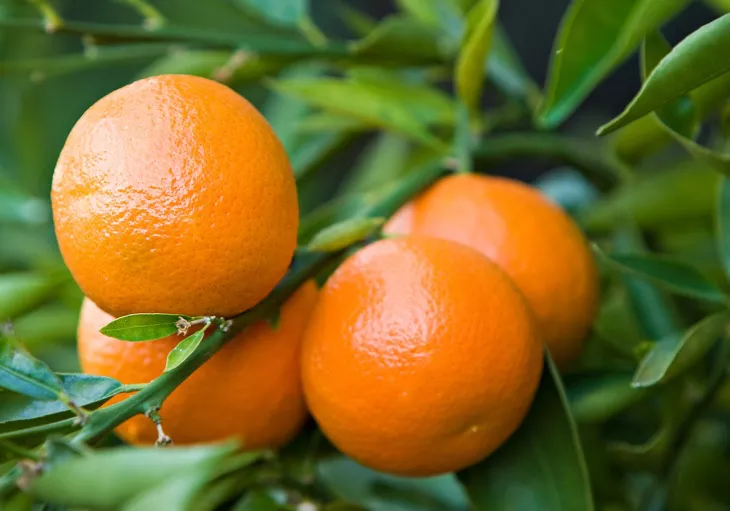In the realm of nutritional choices, the debate between freshly squeezed juice and whole fruit has sparked discussions about which option offers superior health benefits. Both choices have their merits, and understanding the nutritional nuances is crucial for making informed decisions. This article delves into the comparative analysis of freshly squeezed juice and whole fruit, exploring factors such as fiber content, nutrient concentration, and potential drawbacks. With the keyword “juice” guiding us, let’s navigate through the nutritional landscapes of these popular choices.
The Nutritional Value of Freshly Squeezed Juice:
Freshly squeezed juice is often celebrated for its concentrated burst of vitamins, minerals, and antioxidants. The juicing process involves extracting the liquid content from fruits, leaving behind the fibrous pulp. This method allows for a more condensed form of nutrients, offering a quick and easily absorbable source of hydration and essential vitamins. The lack of fiber in juice allows the body to absorb nutrients rapidly, providing a refreshing and efficient way to meet daily vitamin and mineral requirements.
However, it’s essential to note that the absence of fiber in juice can be a double-edged sword. While the concentrated nutrients are readily available, the fiber, which plays a crucial role in digestion and satiety, is discarded. Without fiber, the natural sugars present in fruits can cause a quicker spike in blood sugar levels. Therefore, moderation and mindful consumption are key when indulging in freshly squeezed juice to prevent potential adverse effects on blood sugar regulation.
Whole Fruit: Harnessing the Power of Fiber
Whole fruits, in their unaltered state, offer a holistic nutritional package that includes both the liquid content and fiber. Fiber is a vital component that contributes to digestive health, aids in maintaining a healthy weight, and regulates blood sugar levels. Unlike juice, consuming whole fruits requires more time and effort for digestion, providing a gradual release of sugars into the bloodstream and promoting sustained energy levels.
The fiber content in whole fruits also contributes to a feeling of fullness and satiety, making them an excellent snack choice for those aiming to manage their weight. The act of chewing whole fruits engages the jaw and stimulates saliva production, initiating the digestive process and promoting overall oral health. The fiber-rich nature of whole fruits makes them a valuable ally in supporting digestive regularity and preventing issues such as constipation.
Comparing Vitamin and Mineral Concentrations
When comparing the vitamin and mineral concentrations in freshly squeezed juice and whole fruit, it’s essential to consider factors such as serving size and nutrient stability. Freshly squeezed juice can provide a concentrated dose of certain vitamins, such as vitamin C, potassium, and antioxidants, in a smaller volume. This can be advantageous for individuals with specific nutritional needs or those seeking a quick nutrient boost.
However, the juicing process may lead to the loss of certain heat-sensitive vitamins and antioxidants. Additionally, the oxidation that occurs during juicing can affect the stability of some nutrients. On the other hand, whole fruits retain their nutrients in a more stable form, ensuring a consistent supply of vitamins and minerals. Consuming a variety of whole fruits contributes to a broad spectrum of nutrients, supporting overall health and well-being.
Antioxidant Content: A Closer Look
Antioxidants play a crucial role in neutralizing free radicals in the body, protecting cells from oxidative stress, and contributing to long-term health. Both freshly squeezed juice and whole fruits are rich sources of antioxidants, but the specific content and availability may vary. The peels, skins, and pulp of fruits often contain higher concentrations of antioxidants.
In the case of freshly squeezed juice, the removal of pulp during the juicing process may result in a lower antioxidant content compared to consuming the whole fruit. However, the concentrated nature of juice can still provide a notable antioxidant boost. To maximize antioxidant intake, incorporating a variety of colorful fruits, including those with edible peels, into your diet is recommended.
Natural Sugars and Caloric Considerations
The sugar content in fruit has been a point of contention, especially concerning the natural sugars found in both whole fruit and freshly squeezed juice. Whole fruits contain natural sugars, such as fructose, accompanied by fiber, which helps slow down the absorption of sugars and prevents rapid spikes in blood sugar levels. The fiber content in whole fruits contributes to a feeling of fullness, making it less likely for individuals to overconsume sugars.
On the other hand, the juicing process extracts the liquid portion of the fruit, leaving behind the fibrous pulp. This results in a higher concentration of natural sugars in the juice, potentially leading to quicker spikes in blood sugar levels. While the sugars in freshly squeezed juice are natural and accompanied by vitamins and minerals, moderation remains crucial, especially for individuals managing conditions like diabetes or insulin resistance.
Hydration Factor: Juice as a Liquid Refreshment
Freshly squeezed juice can be a valuable source of hydration, providing a flavorful alternative to water. The liquid form of juice allows for quick absorption, making it an appealing choice for those looking to boost their fluid intake. However, it’s essential to recognize that while juice contributes to hydration, it should not replace water as the primary source of daily fluid intake.
Whole fruits, with their water content and fiber, also contribute to hydration. Chewing and consuming whole fruits can have a hydrating effect, promoting overall well-being. In hot climates or during physical activity, incorporating hydrating fruits, whether in whole or juice form, can aid in maintaining optimal fluid balance.
Potential Drawbacks of Freshly Squeezed Juice
While freshly squeezed juice offers a concentrated source of nutrients, it’s crucial to acknowledge potential drawbacks associated with its consumption. The removal of fiber during juicing can impact digestive health, potentially leading to issues such as irregular bowel movements. Additionally, the calorie content in juice can add up quickly, particularly if consumed in large quantities, contributing to excess calorie intake.
The speed at which juice is consumed can also impact satiety signals, potentially leading to overconsumption of calories. Furthermore, certain juicing methods may involve the addition of extra ingredients, such as sweeteners or preservatives, which can impact the overall nutritional profile of the juice. Therefore, individuals opting for freshly squeezed juice should do so mindfully, considering portion sizes and choosing varieties without added sugars or unnecessary additives.
Making Informed Choices:
In the debate between freshly squeezed juice and whole fruit, there is no one-size-fits-all answer. The optimal choice depends on individual preferences, nutritional needs, and health goals. For those seeking a quick nutrient boost or with specific dietary requirements, freshly squeezed juice can be a valuable addition to the diet when consumed in moderation.
On the other hand, whole fruits offer the added benefits of fiber, sustained energy release, and enhanced satiety. Including a variety of whole fruits in the diet contributes to a comprehensive nutritional profile, supporting overall health and well-being. The key is to strike a balance that aligns with individual preferences, taste preferences, and health considerations.
Conclusion:
In the comparison between freshly squeezed juice and whole fruit, both options bring unique nutritional profiles to the table. Freshly squeezed juice offers a concentrated burst of vitamins and minerals, making it a convenient option for a quick nutrient boost. However, the absence of fiber and potential drawbacks associated with excess sugar and caloric intake should be considered.


























